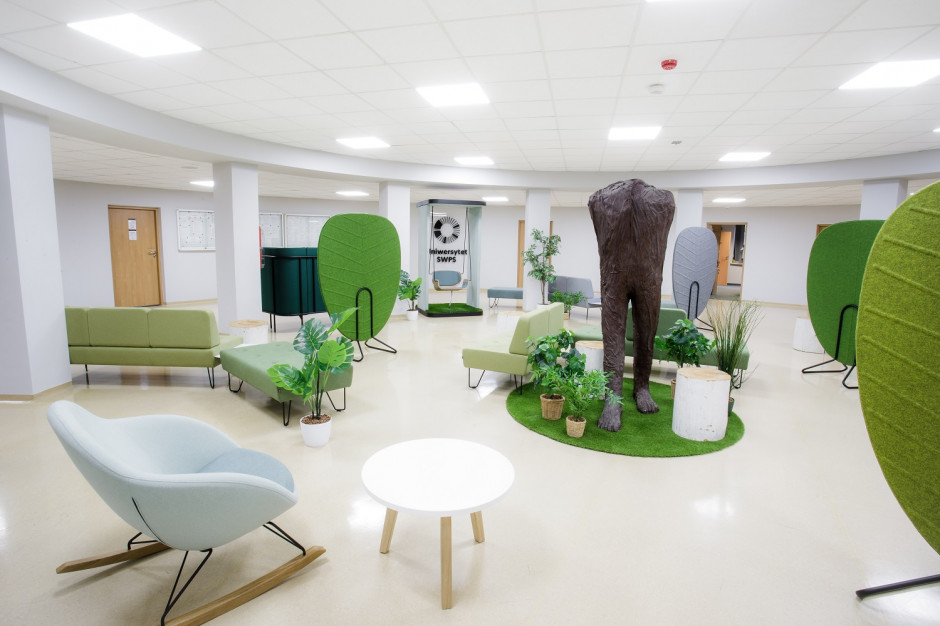Architecture affects the general well-being of space users. It also has its share of improving health, learning capabilities and quality of work. In order to adequately design interiors for the increasingly diverse requirements of people in the twenty-first century, architects face a real challenge. SWPS University responded to the expectations of students, and taking into account their needs, together with HOOF professionals, on our campus in Pozna, we were able to create a unique space for study and relaxation.
The pace and quality of life has changed dramatically over the past decade. The so-called nanosecond culture prevalent today has made everything instantly available. This approach affects all areas of modern human life. In addition, the COVID-19 pandemic has revealed a change in needs and opportunities not only in the approach to work, but also in science. Therefore, architects face new challenges – whether in designing a beautiful and comfortable space, or – or perhaps most importantly – a challenge that meets the expectations of the younger generation. These, in turn, differ significantly from what has been known so far.
Education in a broader context
In many companies, designing office interiors according to the expectations and needs of employees is a standard. The purpose of the space is to enhance efficiency and focus, it has been planned in such a way that the work not only brings impact but also enhances the well-being of the employees. The approach to office space design is changing, and so is the business model. It is similar to teaching. Seemingly cliched elements, such as ensuring maximum access to natural light, visibility of greenery and natural elements in interiors, or acoustic comfort, can improve the quality of learning, influence its effectiveness and increase creativity. In this area, unfortunately, the real needs of users are still neglected in the education system.
In a world of constant change, innovation and rapid pace, the challenges to education are also becoming multidimensional. Therefore, there is an increasing need to take a broad view of the changes taking place – it is essential to understand their interconnectedness and their effects. From the research included in the “Futures of Education” report. 2046 Scenarios” (developed for the Infoture Institute in Natalia Hatalska) shows that universities are not likely to change much. Although the campus in 2046 will certainly be more aesthetic and modern, the assumptions will remain the same, as the university presents a certain model for how People spend their best years.Why not make it the friendliest place ever?In addition, well-designed educational facilities increase the efficiency of the learning process by 20-25%.







